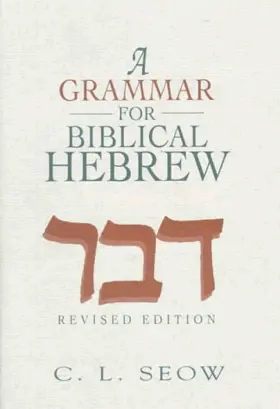

A Grammar for Biblical Hebrew
Pages
366
Publisher
Abingdon Press
Published
1995
ISBN-13
9780687157860
Reviews
Continues and updates the Lambdin approach to learning Hebrew.
[Full Review]
Nashville: Abingdon Press, 1995. Pp. xii + 366, Hardcover, $29.95, ISBN 0687157862. Frederick E. Greenspahn University of Denver Denver, CO 80208 Why are introductions to Biblical Hebrew so much less inviting than those to other languages, such as Italian, French, or German? And could that fact have anything to do with C. L. Seow’s observation, in the first edition of his widely used grammar, that Biblical Hebrew is “an endangered field in Christian theological education”? Seow has now gone a step further in attempting to address that issue with this revision of that work. The changes are not limited to the four listed by the publisher (inclusion of the biblical text from the outset, explanation of accents and cantillation marks, increased attention to syntax, and the incorporation of several excursuses). In addition, the text has been rephrased, terminology simplified, and the grammatical content substantially rearranged. Gone are references to “G” and “D” in favor of the familiar qal and pi'el. Likewise, “transcribe” has given way to “transliterate” and “direct object” to “accusative.” Many biblical examples and exercises have also been changed, although it is often difficult to see why this was done; some are so truncated that the value of using a direct quotation is hard to comprehend. In any event, this really is an entirely new edition, rather than the old one with a few cosmetic modifications. The author has expended a great deal of effort to give students direct contact with the Bible and standard reference works. Actual biblical texts, assigned directly out of the Bible rather than being presented in the text, are used as reading drills from the start. There is also no Hebrew-English glossary; instead, students are encouraged to use their own dictionary. (There is an English-Hebrew glossary in order to facilitate translation exercises.
[Full Review]

